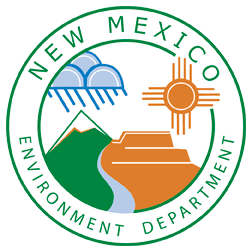- Who is eligible to participate in the VRP?
- How do I apply to the VRP?
- Why is a Phase I Environmental Site Assessment required?
- What does it cost to participate in the VRP?
- What are the steps in the VRP process?
- How can the VRP help me sell my property?
- What assurances do I get if I buy a piece of property that has been through the VRP?
- What if the groundwater beneath the property that I want to buy has been contaminated by an off-site source?
- Can I enter the VRP if no remediation is needed at my site or if the remediation has already been completed?
Who is eligible to participate in the VRP?
To be eligible, an applicant must: a) own the site, b) operate a facility located on the site, c) be a prospective owner of the site, or d) be a prospective operator of a facility at the site. If the applicant is not the property owner, written consent from the property owner is required as part of the application. You may not be eligible to participate if an environmental permit for the contamination at the property is required, if an environmental enforcement action is pending, or if any of the applicants has a history of environmental non-compliance. See 20.6.3.200.A NMAC for more specific information. Check with VRP staff to discuss your situation.
How do I apply to the VRP?
Submit a completed application along with the non-refundable application fee of $1,000. To be complete, your application must include: the application form, a vicinity map, a site map and legal description, a current Phase I Environmental Site Assessment Report or its equivalent, a Preliminary Voluntary Remediation Work Plan, and written consent from the property owner if different from the applicant.
Why is a Phase I Environmental Site Assessment required?
A Phase I ESA identifies conditions that may indicate releases or threatened releases of contaminants at or to a property. It documents current and prior uses of the subject property as well as current and past uses of nearby properties. The process, which must be conducted by an environmental professional, consists of a records review, interviews, and site reconnaissance. It does not require environmental sampling.
A Phase I ESA report is a required component of the VRP application because it summarizes the known and suspected environmental conditions at or affecting the site. As such, it focuses the scope of any subsequent investigation and remediation that may be needed. The Phase I ESA should be conducted in conformance with the current American Society for Testing and Materials (ASTM) Standard Practice E1527. The Voluntary Remediation Regulations allow for submittal of an equivalent ESA meeting certain minimum specifications (see 20.6.3.200.B(3) NMAC), but with rare exception the VRP recommends submittal of a Phase I ESA report consistent with the ASTM Standard Practice E1527.
Conducting a Phase I ESA according to the ASTM Practice also satisfies EPA’s All Appropriate Inquiries rule, 40 CFR 312, applicable to persons seeking to establish liability protection as an innocent landowner, contiguous property owner, or bona fide prospective purchaser under the Comprehensive Environmental Response, Compensation and Liability Act (CERCLA). If you are considering the purchase of a commercial property, conducting a Phase I ESA prior to purchase protects you and your lender from CERCLA liability and alerts you to environmental issues whose resolution should be considered in negotiating a purchase agreement.
What does it cost to participate in the VRP?
There is a non-refundable $1,000 application fee which covers NMED’s costs to review the application, determine eligibility, and negotiate a Voluntary Remediation Agreement. After the agreement is signed, NMED charges an hourly fee for oversight of the remediation, and, if applicable, for long-term oversight of compliance with a Conditional Certificate of Completion. The current rate is $125/hour (this is reviewed annually). The total cost depends on how much NMED involvement is needed. Local/tribal governments and non-profit organizations can request a waiver or reduction of the oversight fees.
In addition to oversight charges, all applicants are responsible for providing public notice at their own expense (see Step 3 in the VRP process question).
What are the steps in the VRP process?
View process flow chart
1. Application. NMED will evaluate the application and notify the applicant of any additional information that may be needed. Within 30 days of receiving a complete application, NMED is required to reach a conditional determination of the applicant’s eligibility to participate in the VRP.
2. Conditional Eligibility. NMED will send a letter informing the applicant of conditional eligibility and a draft Voluntary Remediation Agreement (view sample agreement). The letter will explain the public notice requirements that the applicant must fulfill.
3. Public Notice and Comment Period. Upon receiving notification of conditional eligibility, the applicant has 10 days to begin the 30-day public notice and comment period. At his or her own expense, the applicant must post a sign at the site, publish legal and display ads in two newspapers, and notify local officials. NMED will also post the notice on its website. This public notice gives community members an opportunity to review the proposed voluntary remediation activities and provide input about their concerns. If a member of the public requests a public meeting and NMED determines there is significant interest, a public meeting will be held at the applicant’s expense.
4. Final Eligibility and Voluntary Remediation Agreement. After conclusion of the public comment period, NMED will notify the applicant of its final eligibility determination and any proposed modifications to the Voluntary Remediation Agreement. Both parties sign the final agreement, and the applicant becomes a VRP participant. From this point on, hourly NMED oversight charges apply.
5. Work Plan Approval and Implementation. Unless a demonstration has been made that further investigation and cleanup are not needed at the site, the participant must submit a final work plan within 30-60 days of signing the Voluntary Remediation Agreement. Upon approval by NMED, the remediation activities may begin. If the work will be completed in phases, the participant may submit the work plan in phases. Work plans may be modified with approval from both parties.
6. Completion. When the remediation activities are complete, the participant submits a completion report and an Affidavit of Completion. NMED has 45 days to approve the report or identify data gaps. After the completion report is approved and the participant has paid any outstanding oversight charges, NMED will issue a Certificate of Completion documenting that the site meets applicable standards. NMED will issue a Conditional Certificate of Completion if monitoring, engineering controls, land use restrictions, or other post-closure care is required.
7. Covenant Not to Sue. If a participant applied to the VRP prior to purchasing the site and did not contribute to the contamination, the participant is entitled to a Covenant Not to Sue. Likewise, future owners may request a Covenant Not to Sue, upon demonstrating title and confirming familiarity with any terms in the COC/CCOC.
How can the VRP help me sell my property?
If your property is contaminated or perceived to be potentially contaminated, you may have trouble finding a buyer because of concerns about unknown cleanup costs and liabilities. A prospective purchaser, if you find one, will likely want to negotiate a lower price than you think the property is worth, and even at that, the purchaser may not be able to obtain financing. The VRP can resolve these difficulties.
The VRP provides assurance through its Certificate of Completion that contamination issues on your property have been satisfactorily addressed. A future owner can also obtain a Covenant Not to Sue from NMED for any direct liability for the contamination covered by the Voluntary Remediation Agreement. Lenders also receive liability protection through the VRP.
While it requires an investment on your part to conduct an investigation and/or remedial activities, successfully completing the VRP can help you sell your property more quickly and more profitably.
What assurances do I get if I buy a piece of property that has been through the VRP?
If you purchase a property that has successfully completed the VRP, you are entitled to a Covenant Not to Sue from NMED for any direct or future liability for the contamination covered by the Voluntary Remediation Agreement. While this does not protect you from third party claims, both NMED and the U.S. EPA agree to release you from liability (see the Memorandum of Agreement for details). Be sure to carefully read the Certificate of Completion and Covenant Not to Sue so that you understand what contamination and environmental media are covered.
What if the groundwater beneath the property that I want to buy has been contaminated by an off-site source?
If your property is affected or threatened by groundwater contamination originating solely from another property, you may enter the VRP to demonstrate that you are not responsible for that contamination. This will proactively protect you, your tenants, and future owners from the responsibility to remediate the groundwater. Please note, however, that if vapor from the groundwater contamination is adversely affecting the indoor air of structures on your property, you may have an obligation to mitigate those effects.
Can I enter the VRP if no remediation is needed at my site or if the remediation has already been completed?
Yes. The VRP allows you to conduct an investigation and show that there is no contamination at your site. Sites that have already undergone investigation and/or remediation may also be entered into the VRP at NMED’s discretion.

